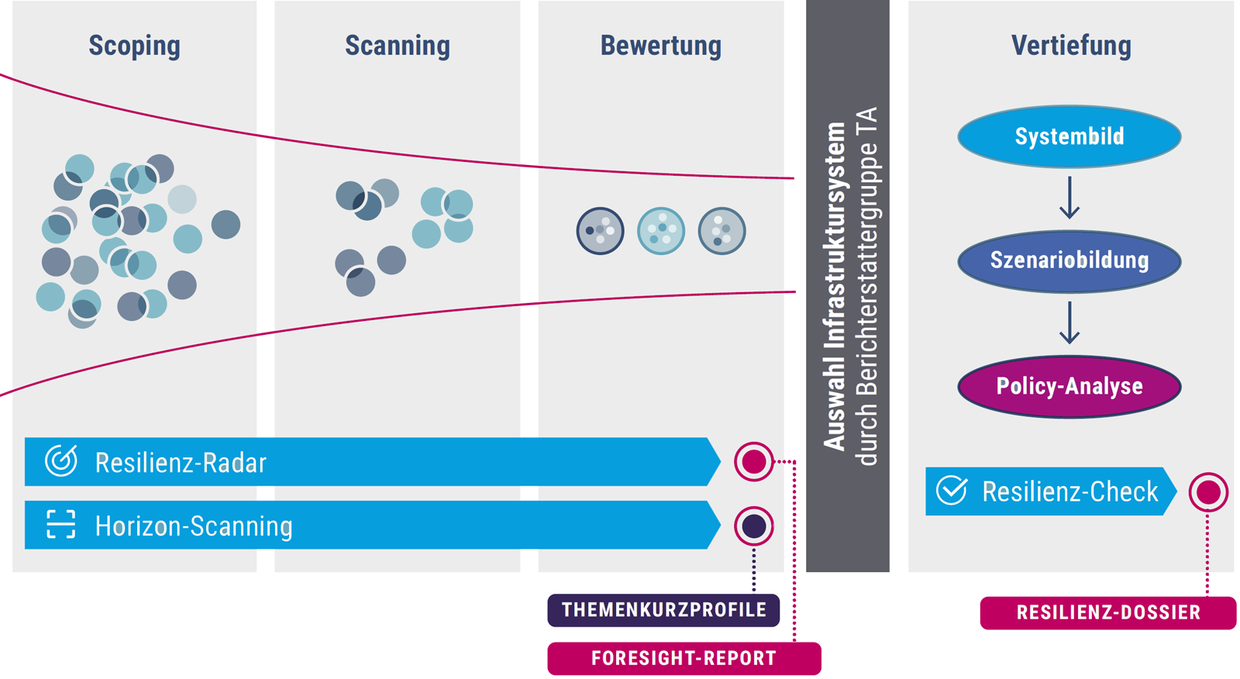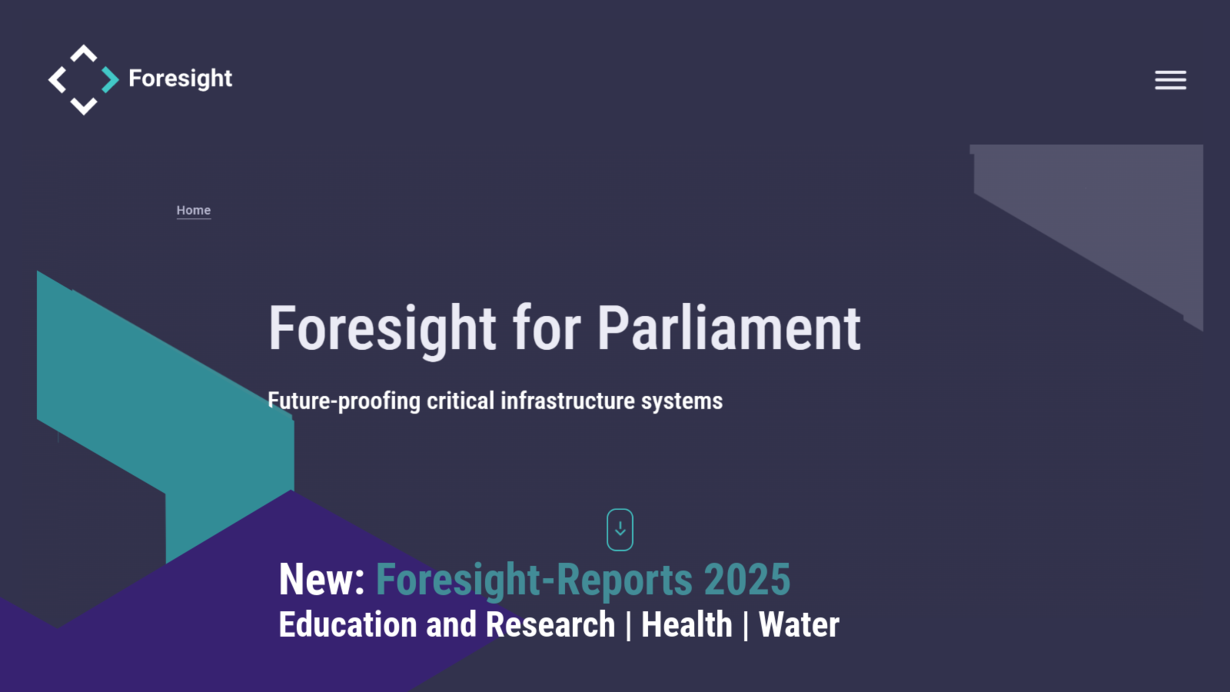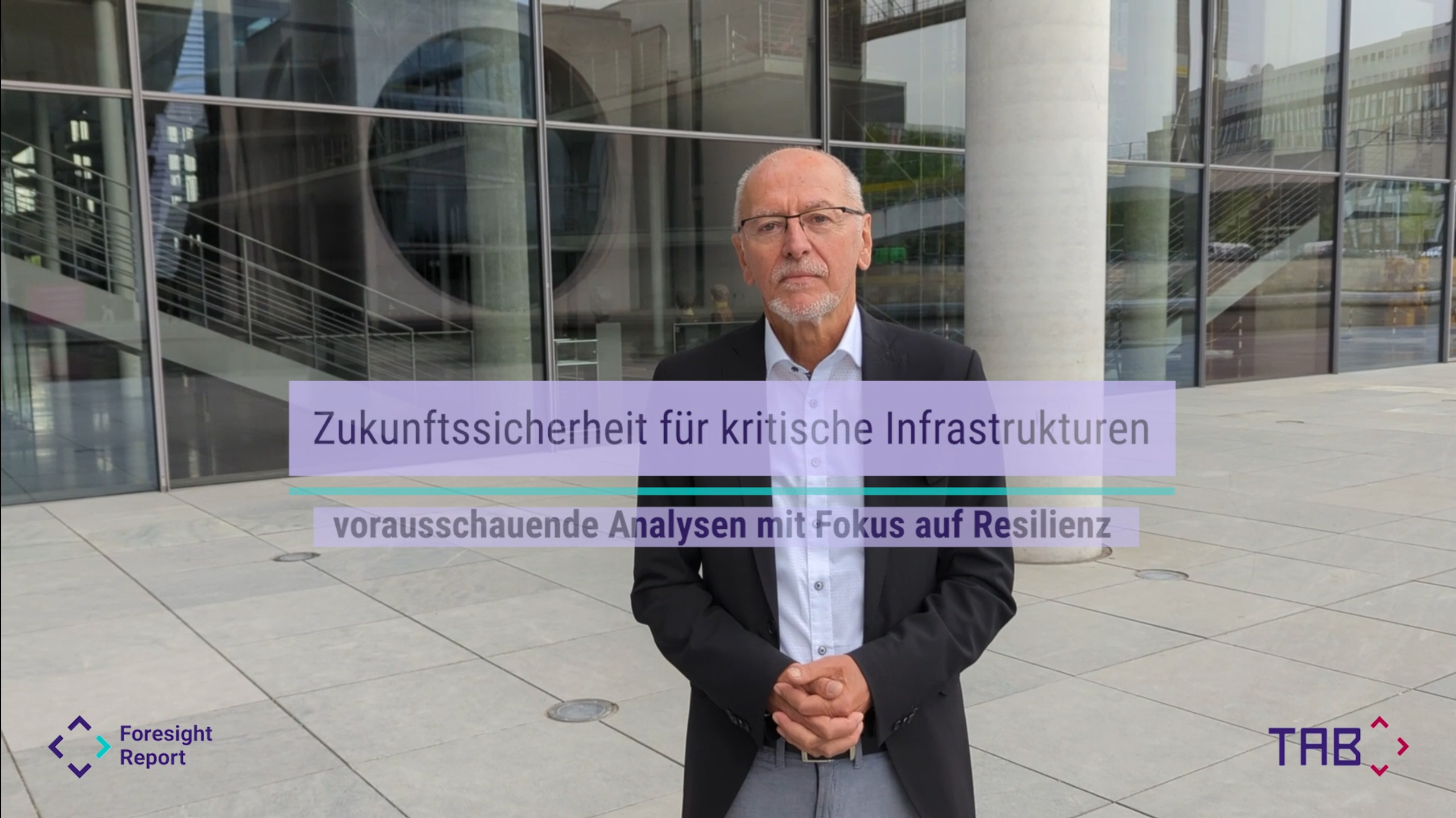In the context of numerous crises and disruptions, the radar and orientation function of parliamentary TA is becoming increasingly important. We are therefore expanding our foresight activities by adding a resilience radar and an in-depth resilience check to the existing horizon scanning.

The two basic search methods (horizon scanning, resilience radar) are based on different sources and selection criteria. Each approach is carried out in three steps: First, the pool of sources is defined (scoping), then the sources are systematically examined and potentially interesting developments are collected (scanning). The extracted information is then evaluated and validated (assessment).
In addition to the topic briefs developed from the horizon scanning, the results of the Resilience radar are summarised in an annual Foresight Report, on the basis of which a selected infrastructure system is subjected to a scenario-based and participatory resilience check with reference to selected focus topics (in-depth analysis).
The analysis is both expert and data based:
- Data-based: We analyse the sources semi-automatically using AI-supported methods. This allows large amounts of data to be processed, searched for relevant content and clustered thematically.
- Expert based: At the same time, we involve national and international experts from the fields of infrastructure systems, technology assessment and foresight. This serves both to identify new important trends and to validate the results.
The foresight process is a joint activity of the entire consortium, with ITAS, IZT and iit of VDI-VDE-IT each contributing their specific expertise and methods.

Horizon scanning is used to identify potentially promising socio-technical innovations and scientific trends at an early stage of development.
More
The Resilience Radar is used to identify trends and hazards associated with systemic risks and challenges to critical infrastructure systems.
More
The aim of the Resilience Check is to develop viable, scenario-based, participatory resilience strategies for selected infrastructure systems and key issues.
More
provide annualy a compact overview of about ten scientific and technological trends from horizon scanning, considered particularly innovative
More
presenting the results of the Resilience Radar: trends, systemic risks and hazards of selected infrastructure systems will be published annually from 2024.
Go to the microsite
will be published annually from 2025 and will describe future scenarios for a focus topic of selected critical infrastructure systems, developed through a participatory process.


